The Birth of the Lincoln Cent
For the U.S. to place an image of a real historical person, even one as legendary as Lincoln, on a coin took great courage.
On April 14, 1865, President Abraham Lincoln and his wife, Mary Todd Lincoln, attended a play, “Our American Cousin,” at Ford’s Theater in Washington, DC.
About 10:15 PM that night, as the play reached a moment when raucous laughter was expected, the famous actor, John Wilkes Booth, entered the President’s box, came up behind Lincoln and shot him in the head.
The President was mortally wounded and the next morning at 7:22 AM, Lincoln passed from this world. The nation, especially the North, was in a state of shock. He was mourned even more than when George Washington had passed, as in Lincoln’s case he was taken from us so brutally and unexpectedly.
As the year 1909 approached, there was great pressure to honor the fallen President. But to place Lincoln’s image on a coin would be a real departure from our practice. Up until that point in time no actual historical figures, presidents or otherwise, had appeared on our coinage. The allegorical representations of Miss Liberty had dominated the obverse of our coins. Miss Liberty was our nation’s ‘role model,’ representing freedom and liberty to all of us.
But our President in 1908 was not one to let conventional wisdom make the rules. Theodore Roosevelt had complained loudly about the ‘Hideous Atrociousness’ of our bland coin designs. Roosevelt persuaded his good friend, Augustus-Saint Gaudens, to create coins that would make American coinage the envy of the world. Saint-Gaudens created two spectacular coins. He designed a $10 Gold Eagle coin with Miss Liberty wearing a Native American headdress and he also designed a $20 Gold Double Eagle which depicted Miss Liberty carrying the Torch of Freedom. Even more than 100 years later, they are regarded as some of the most beautiful coins in our history. But he was in poor health and died before he could redesign the one cent coin.
President George Washington had died in 1799, but he created a dilemma in American coinage. Washington had won a war for our independence against a King. He detested the British tradition of the reigning monarch’s image appearing on all coinage of the realm. For the U.S. to place an image of a real historical person, even one as legendary as Lincoln, on a coin took great courage.
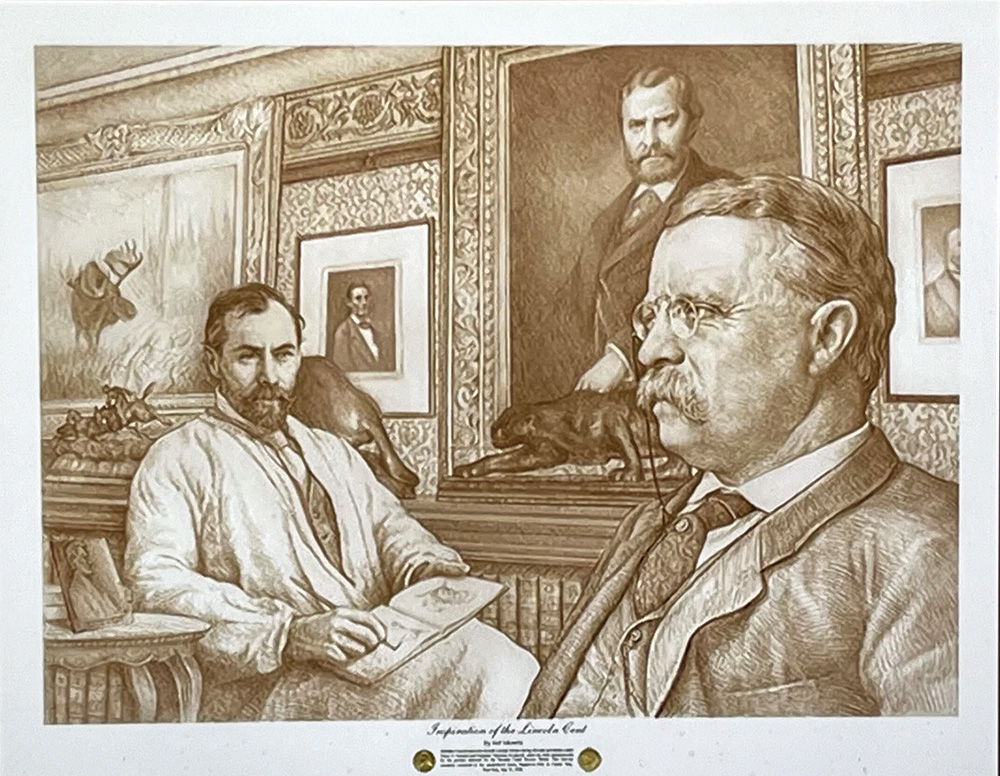
Teddy Roosevelt now had to find a great medallic sculptor to create this one cent coin, in Lincoln’s image. A Lithuanian sculptor, at age 19, came to America rather than being exiled to Siberia. Viktoras Baranauskas changed his name to Victor David Brenner.
In 1908 Brenner was commissioned to create a Panama Canal Service medal. The obverse image was that of Teddy Roosevelt, as he was the President during the digging of the Canal and a driving force to get that massive project done. During the modeling sessions for that medal, Brenner got to know Roosevelt, and Brenner suggested to him that a new one cent coin should have Lincoln’s portrait on it. The centennial of Lincoln’s birth was only a year away and Brenner had just completed a plaque of Lincoln. After seeing it, Roosevelt told him to design a coin, using that same pose on the plaque.
The obverse of this new Lincoln cent had a profile of Lincoln, facing to the right. Above his head is the phrase “IN GOD WE TRUST,” and the word “LIBERTY,” is on the open field to the viewer’s left. The date of minting is to the right of the bust of Lincoln.
The reverse of the coin has the words “ONE CENT,” on two lines in the center of the coin, inside two wheat stalks—one to the left and one to the right. Below the denomination is “UNITED STATES OF AMERICA,” on two lines and the motto, “E PLURIBUS UNUM” adorns the upper periphery. At the very bottom of the coin were Brenner’s initials, “VDB.”
U.S. Mint officials realized that the demand would be great for the new Lincoln coin and the Philadelphia Mint struck approximately 100 million 1909–dated coins and the new San Francisco Mint struck another one-half million. Some 28 million coins were struck with Brenner’s initials on the reverse and the rest without them. There had been public complaints that Brenner’s initials were too large and too obvious.
Public demand was even greater than anyone had imagined. The Mint had planned a coordinated release of these coins across the country, but demand was so great that rationing of allotments went from unlimited to 100 to 2 coins! On August 2, 1909, the official release date, members of the public were paying up to a quarter per coin. Within days, the asking price settled down to five cents. The new coin was a rousing success!
The obverse portrait of Abraham Lincoln has remained unchanged since the coins were first struck in 1909.
Images courtesy of Heritage Auctions, Harper's Weekly & Lithograph by Master Coin Designer Joel Iskowitz.

Download the Greysheet app for access to pricing, news, events and your subscriptions.
Subscribe Now.
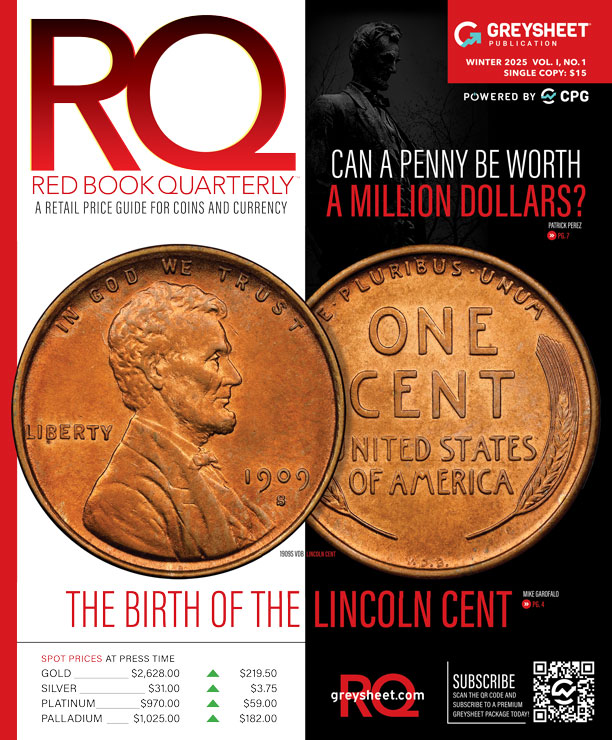
Subscribe to RQ Red Book Quarterly for the industry's most respected pricing and to read more articles just like this.
Author: Michael Garofalo


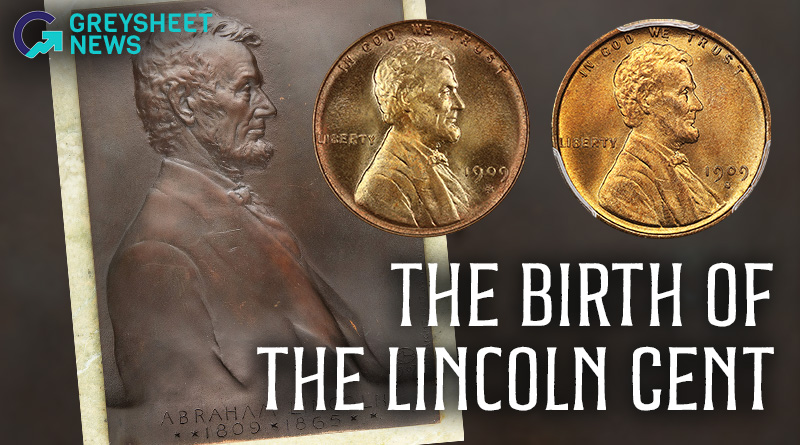






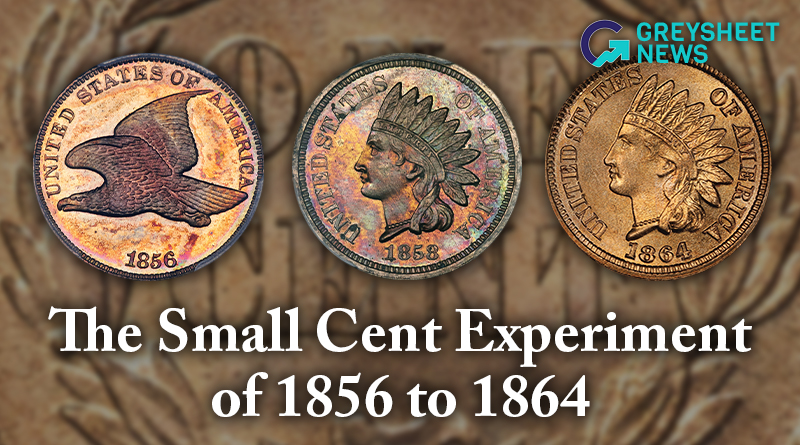
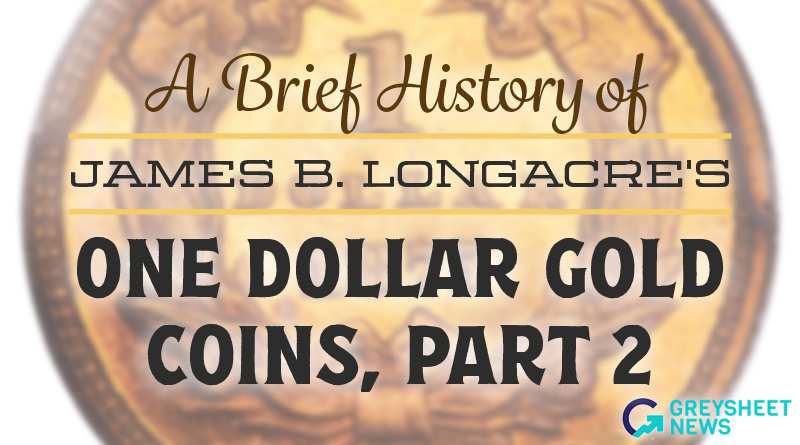
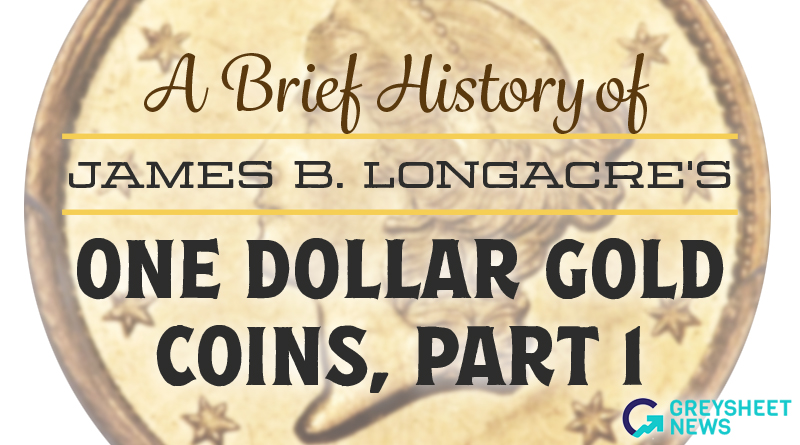
Please sign in or register to leave a comment.
Your identity will be restricted to first name/last initial, or a user ID you create.
Comment
Comments